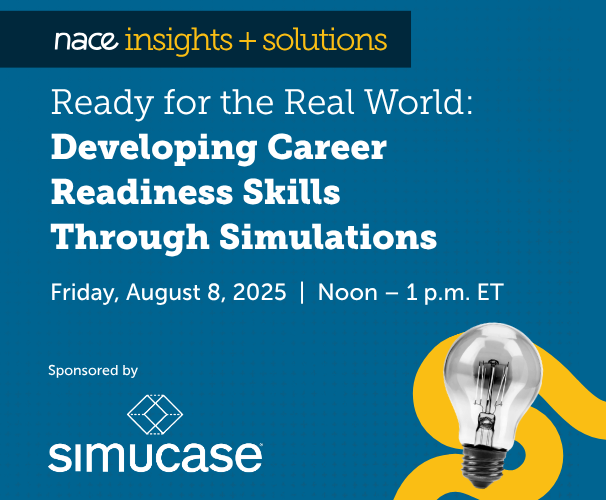Between 80% and 85% of McPherson College’s student body is working at any given point in the year, which includes both the academic year and breaks.
“While we are educating them academically and they are gaining skills in their jobs, are we educating them career-wise?” asks Amy Beckman, executive director, career and experiential learning at McPherson.
To make students aware of the skills they are developing during their campus job, Beckman led an initiative to review the job descriptions of all student positions campus wide and incorporate the NACE Career Readiness Competencies into student job descriptions and supervision.
“During our review, we found several job descriptions that were incomplete and not as defined as we wanted them to be,” Beckman says.
“It was a great opportunity for us to put some intentional purpose behind what we are coaching and mentoring our student employees in and finding out what our students are learning on the job.”
Doing so also allowed Beckman to target mentorship programming for supervisors and training for student employees to connect the competencies to their work.
At the time McPherson undertook this work, Beckman was a team of one, as was the college’s human resources department. The two partnered to obtain the job descriptions from student employee supervisors in all departments across campus and link the job descriptions to career readiness competencies.
“We provided an updated job description template, copying provided info from the old job descriptions, and added additional info that we wanted to incorporate,” Beckman explains.
They focused on student learning outcomes by:
- Listing what students can learn from working in a position; and
- Defining the competencies and checking the boxes of the competencies that the student will learn through the job.
Beckman and her colleague also assessed the positions for skill level and based on those findings, created tiered compensation levels.
Calling the initiative “a work in progress,” she explains that the team finished the job descriptions last academic year and did a high-impact practices student employment training with supervisors, which introduced this concept.
Beckman also partnered with McPherson’s VP of student affairs and student affairs staff to ensure the initiative would meet student needs when building the concept of high-impact student employment.
This year, the initiative is adding more intentional trainings for supervisors about how to have high-impact practices within the work they have students do and to have reflection conversations with students about what they're learning—such as time management, teamwork, and professionalism—and how they can apply that to their current work, other jobs, and their school work.
“We are leveling up our experiences, so we feel more confident when we're sending our students out into the community to do internships and to work, and we want our employers to be confident that our students are well prepared,” Beckman says.
The next step will be to hold monthly training sessions with student employees, during which, for example, they will learn and practice how to articulate the skills and competencies they gained to employers.
“Now that we know what competencies are being coached in positions, we can start training accordingly and beefing up on competencies that aren't coached as strongly through student employment, curricula, and mentorship,” Beckman says.
“It was great to do an evaluation of the application of competencies in our student employment roles, and surprisingly they aligned with the top three competencies employers are seeking. That was a nice surprise. We’re making sure that our students are well-versed, practiced, and ready for what comes after they move their tassel over at graduation.”







